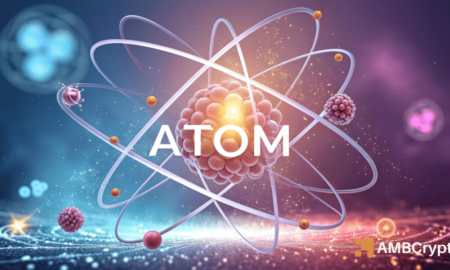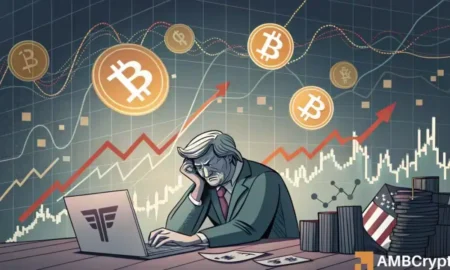Ethereum, the second-largest cryptocurrency by market capitalization, has experienced a significant decline in active addresses since the beginning of the year, dropping from approximately 525K to around 333K. This decrease in user engagement and transactional volume has coincided with a weakening price trend, with Ethereum stabilizing near $1.8K at press time. Recent data also shows a sharp reduction in Ethereum’s total fees burnt, indicating a decrease in on-chain activity and network congestion. This trend has raised concerns about the network’s long-term sustainability and inflation control.
The Dencun upgrade, implemented to enhance Ethereum’s network sustainability, has been met with mixed reactions as data shows a surge in the total supply of Ethereum post-merge. The merge initially brought optimism with its deflationary benefits, reducing Ethereum’s issuance rate and burning more tokens than were created. However, the aftermath of the upgrade has seen the burn mechanism struggle to counter inflation due to declining transaction volumes and lower network activity. This has led to a return to inflationary territory, challenging Ethereum’s original deflationary vision.
The unintended consequences of the Dencun upgrade have raised doubts about the effectiveness of Ethereum’s burn mechanism in controlling inflation during periods of reduced on-chain activity. The network’s post-Merge reality appears misaligned with its initial goals, prompting concerns about its long-term sustainability. Future updates, such as the Pectra upgrade scheduled for April 30th, will need to address these challenges and find a better balance between sustainability and inflation control. Despite these challenges, Ethereum remains a leading player in the cryptocurrency market, with a strong community and innovative technology driving its growth.
The decline in Ethereum’s active addresses and total fees burnt reflect a broader trend of reduced user engagement and on-chain activity. This trend has coincided with a stabilization in Ethereum’s price near $1.8K, suggesting a correlation between network activity and price performance. As Ethereum strives to find a balance between sustainability and inflation control, upcoming upgrades will play a crucial role in shaping the network’s future. The cryptocurrency community will be closely watching how Ethereum addresses these challenges and adapts to ensure its long-term success in the rapidly evolving blockchain landscape.
In conclusion, Ethereum’s recent struggles with declining active addresses and total fees burnt highlight the challenges of balancing sustainability and inflation control in a rapidly changing cryptocurrency market. The Dencun upgrade, while intended to strengthen the network, has inadvertently led to inflationary pressures due to decreased on-chain activity. As Ethereum navigates these challenges, future upgrades such as the Pectra update will be crucial in determining the network’s long-term viability. Despite these obstacles, Ethereum’s strong community and innovative technology position it as a key player in the cryptocurrency space, with the potential to overcome these challenges and continue to drive growth and innovation in the industry.

















